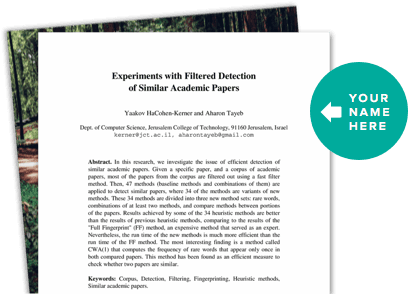About This Project
For decades, scientists have gathered evidence of the biological impacts of weak magnetic fields. In particular, raising tadpoles in a chamber shielding Earth's tiny field causes fewer embryos to survive. These results have been a stalemate in the scientific community, with researchers sometimes denying their validity.Deadlocks like these can be overcome through public replications such as The Tadpole Experiment.
Ask the Scientists
Join The DiscussionWhat is the context of this research?
For decades, scientists have gathered evidence of the biological impacts of weak magnetic fields (MFs). Among others, MFs change human cells' respiration and their production of oxidants; birds use the Earth’s MF to navigate. Companies use MFs to treat tumors and, very vividly, raising tadpoles in a hypomagnetic chamber causes decreased viability.
The effects of MFs on biological systems is a surprise. In a small minority of cases, cells contain chunks of magnetite, so that they respond to MFs like a magnet. In another minority of instances, sharks and rays have organs that act like conduction channels that can sense MFs. For most cases, however, scientists have been unable to explain how the impacts occur.
What is the significance of this project?
The result has been a stalemate in the scientific community, with researchers unfamiliar with weak magnetic field results sometimes denying their validity. Taking a page from the history of science, deadlocks like these can sometimes be overcome through public replications, where the experiment and data are made visible not only to scientists, but to the public as well. A public replication of key experiments with weak magnetic fields, like raising tadpoles in a hypomagnetic chamber, can help scientific consensus catch up to what should be considered the cutting edge.
What are the goals of the project?
To advance the conversation, The QuBiT Lab is performing a public replication of a key experiment: raising tadpole embryos in a hypomagnetic chamber. The chamber is made with mu-metal, a special alloy that, in this case, reduces the magnetic field inside the chamber to about 9 nT. This is much lower than the Earth’s magnetic field, which is about 50 muT.
According to prevailing scientific wisdom, the diminished magnetic field should not produce notable effects. Yet, other researchers who have raised tadpoles in hypomagnetic chambers have found that embryos are non-viable at a significantly higher rate.
Budget
Our lab has a $80000 hypomagnetic chamber that is among the best produced on Earth. It is made with mu-metal, a special alloy that, in this case, reduces the magnetic field inside to about 9 nT. This is much lower than Earth's magnetic field, which is about 50 muT.
Our team of 2 postdoctoral researchers, one physicist and one biologist, are ready to spend the next 3 months ($20000) unambiguously proving or refuting that the development of tadpoles is tweakable by weak magnetic fields -- or the radical absence thereof!
Our laboratory receives a weekly supply of embryos, adult frog testes and adult females that can be harnessed for eggs ($5000) from the The National Xenopus Resource, which we dubbed the US "tadpole academy". Maintaining the frog operation is a challenge well worth it ($2500)!
Finally, The Tapole Experiment runs entirely in open science mode with media support ($2500). And remember that you can do #OpenScience with us too!
Endorsed by
 Project Timeline
Project Timeline
In May 2024, we will raise tadpoles inside our chamber, under 9 nT -- one of Earth's most hypomagnetic environments!
In June 2024, we will raise tadpoles inside our chamber, under Earth's 50 muT -- to control for other factors inside the chamber that might be impacting tadpole development.
In July 2024, we will raise tadpoles inside our chamber, under a simulated Mars magnetic field of about 1 muT!
May 06, 2024
Project Launched
May 30, 2024
We will measure whether differences in viability exist between tadpoles raised under 9 nT inside the chamber vs. ambient magnetic fields.
Jun 29, 2024
We will measure whether differences in viability existbetween tadpoles raised under 50 muT "Earth's magnetic field" inside the chamber vs. ambient magnetic fields.
Jul 30, 2024
We will measure whether differences in viability existbetween tadpoles raised under 1 muT "Mars' magnetic field" inside the chamber and ambient magnetic fields.
Meet the Team
Affiliates
Affiliates
Clarice D. Aiello
Engineer, teacher, and science communicator, Clarice will be the tadpoler-in-chief for the next four months.
She promised she will not say the “Q” word, but the reason she is thrilled about weak magnetic field effects in biology is because such effects are consistent with being driven by a mechanism that cannot be explained by the laws of Newton.
Alessandro Lodesani
Quantum physicist and engineer, Alessandro will be the tadgeneer for the next four months.
He is not only excited about discovering the effects that tiny magnetic fields have on embryos, but he is mostly looking forward to sharing this scientific journey with the whole World Wide Web.
Olli Payne
With a background in media and design, Olli Payne is a creative gun for hire who works with ambitious and impactful projects to communicate their vision. She publishes a sci-fi magazine and is eager to learn how weak magnetic fields might affect life on Mars.
Additional Information
And remember that you can do #openscience with us too!
https://thetadpoleexperiment.org
https://twitter.com/TheTadpoleExpt
https://thetadpoleexperiment.substack.com/ https://www.linkedin.com/company/thetadpoleexperiment https://www.instagram.com/thetadpoleexperiment/ https://www.youtube.com/@TheTadpoleExperiment
***
More than simply solidifying the data behind magnetic field effects in biology, this public replication also help provide support for a more ambitious experimental program: to test the Quantum Biology Hypothesis, i.e., that quantum phenomena have macroscopic biological impacts. The QuBiT Lab proposes to test this hypothesis by constructing quantum microscopes to look inside cells and directly observe whether a quantum phenomenon might be behind biological magnetosensitivity.
Project Backers
- 1Backers
- 1%Funded
- $10Total Donations
- $10.00Average Donation




